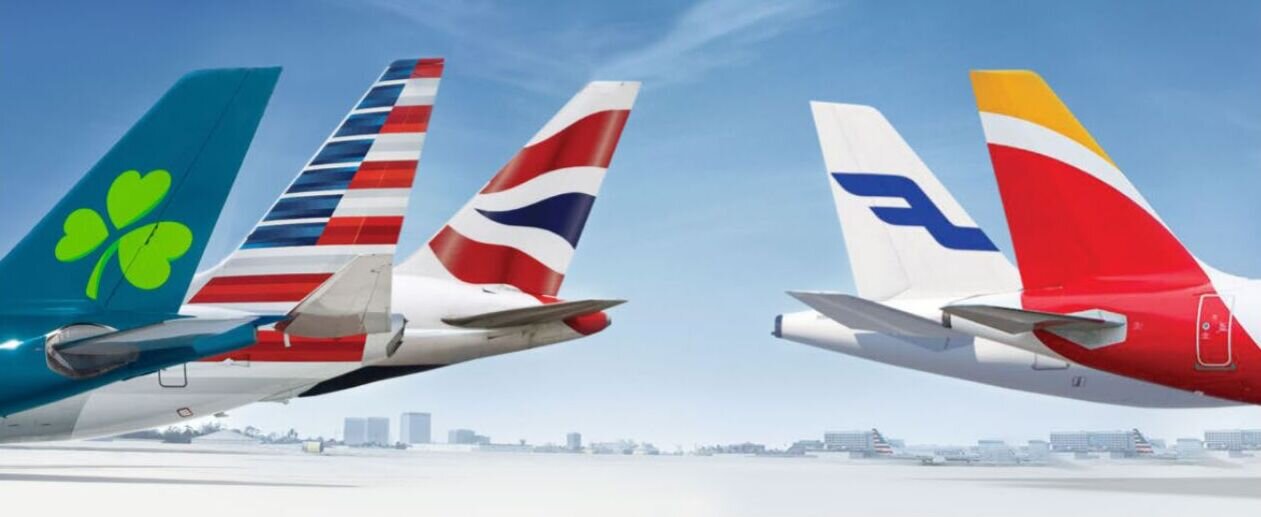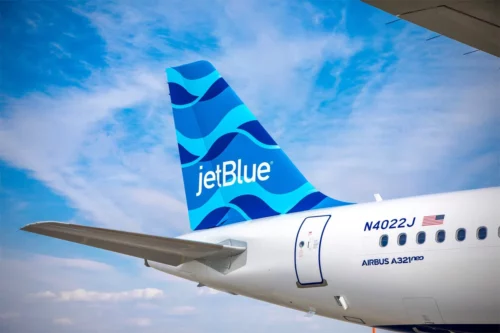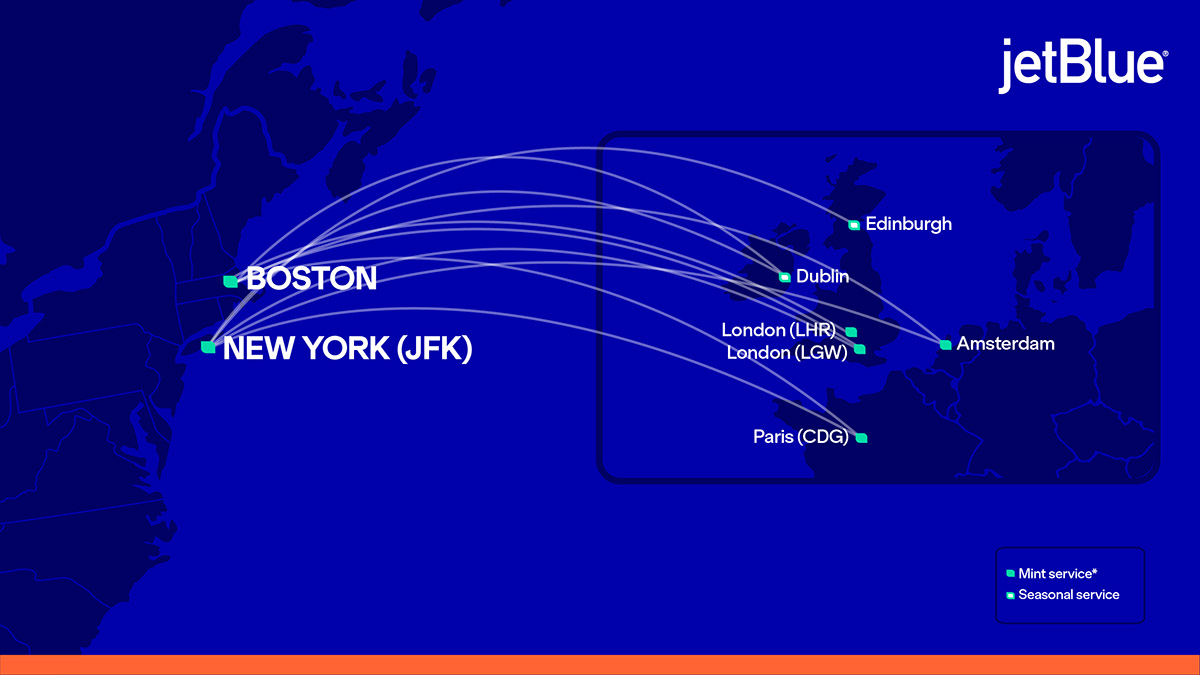Before we review it: How JetBlue is shaking up transatlantic flying
Links on Head for Points may support the site by paying a commission. See here for all partner links.
We’ve covered JetBlue in considerable detail on HfP since it launched its London flights a few years ago, but before I review it (published tomorrow and Wednesday) I wanted to dig a little deeper into the transatlantic market and how JetBlue fits in.
After all, this is one of the busiest flight corridors in the world and home to the world’s only billion-dollar route (London to New York, with British Airways).
On the surface, pre-JetBlue, this seemed like a highly competitive market with flights between London and the US North East from six airlines: American Airlines, British Airways, Delta Air Lines, Norse Atlantic, United Airlines and Virgin Atlantic. There are many more options if you consider one-stop itineraries via other European hubs.

In reality, however, London to New York is highly consolidated with multiple anti-trust approved Joint Ventures. This allows the co-ordination of flight schedules and – crucially – co-ordinated pricing and the pooling of revenues.
For all intents and purposes, AA / BA and Virgin / Delta operate as a single airline on transatlantic routes and hold a dominant market share.
Flying via Europe isn’t the answer either. Aer Lingus, Finnair and Iberia are part of the AA / BA joint venture. Air France, KLM and soon SAS are part of the Virgin / Delta JV. Lufthansa has a JV with United and Air Canada. You have far fewer choices than you think.
Over the decades, many airlines have tried to break into this market and claim their slice of the pie. Richard Branson succeeded in the 1980s with Virgin Atlantic, which has now become an incumbent.
More recently, Norwegian made a go of it in the 2010s with a low-cost model before the combined forces of an unreliable (but brand new) Boeing 787 fleet and covid knocked it out. It was replaced by an almost-identical Norse Atlantic. We’ve also seen multiple attempts to launch ‘all business class’ airlines on transatlantic routes – which failed because they didn’t have the frequency that the business market demands – as well as BA’s shuttered A318 service from London City.
JetBlue is the latest airline to have a go. Since its founding in 2000 the airline has gained a strong foothold in the US North East, becoming the largest airline to fly from Boston and the second largest from New York JFK behind Delta.
Part of JetBlue’s secret sauce has been straddling the divide between low cost carriers such as Frontier and Spirit and full service airlines such as United, Delta and American. This means offering unbundled no-frills economy tickets whilst also providing free wifi and a complimentary drinks service to all passengers, regardless of class.
Is it low cost or full service? In truth, it is neither.
JetBlue dips its toe in the (Atlantic) ocean
Having become on the of the biggest domestic airlines in the North East, JetBlue set its sights on transatlantic expansion.
The airline’s fleet was already dominated by the Airbus A320 family, including the larger A321 variant. This meant that it was well placed to capitalise on the introduction of the A321LR (‘Long Range’) and A321XLR (‘eXtra Long Range’) models, both of which have the capacity to fly transatlantic despite being small single aisle aircraft.
Both of these aircraft are likely to have a transformative effect on aviation in the coming decade, something which I hope to expand on in a future article. Thanks to their smaller size, they are cheaper and more efficient to operate, bringing narrow-body economics to wide-body destinations.
It is far easier to fill an A321LR than even the smallest of wide-bodies, and the break-even point is low. After all, London to New York is 75% further than, say, London to Larnaca (a route BA operates with a similar short-haul Airbus) but premium cabin fares are many multiples higher.
The new A321 models allow airlines to open up new direct routes or, for JetBlue, to launch into new markets without the big up-front costs of a wide-body operation.
Airlines also benefit from additional flexibility. Launching its first transatlantic flights to London was comparatively low-risk, given that JetBlue could simply repurpose its fleet of A321LRs if things didn’t go to plan.
The aircraft can also fly short haul routes in between long haul flights, further increasing the time the airline is in the air and earning money. Aer Lingus, for example, uses its A321LR fleet to fly from Dublin to UK/Europe and back in the gap between its early morning arrivals from the US and the evening departures back.
JetBlue received the first of 13 A321LRs in April 2021 and launched its first transatlantic flights to Europe later that year, starting with New York to London Heathrow. In the two-and-a-half years since then, JetBlue has launched a further 12 routes including to Amsterdam, Paris, Dublin and (later this month) Edinburgh.
Over half of these are to the UK and Ireland, with JetBlue now offering the following flights:
From London Heathrow:
- 2x daily to New York JFK
- 1x daily to Boston
From London Gatwick:
- 1x daily to New York JFK (summer only)
- 1x daily to Boston (summer only)
From Dublin:
- 1x daily to New York JFK
- 1x daily to Boston (summer only)
From Edinburgh
- 1x daily to New York JFK
But what’s JetBlue like in its premium Mint and Mint Suite seats? You can read our review of JetBlue’s Mint Suite here. Our review of the front-row Mint Studio is here.
PS. Whilst not in an airline alliance, you can earn Avios when flying JetBlue due to its partnership with Qatar Airways Privilege Club. You can read more in this article.






 Rhys
Rhys 





Comments (44)